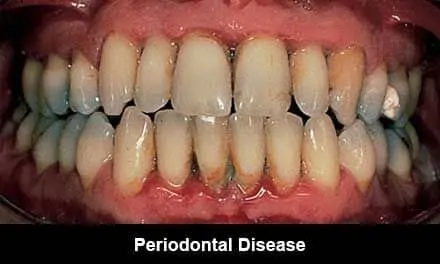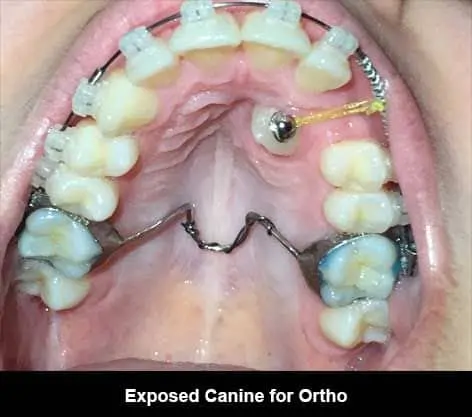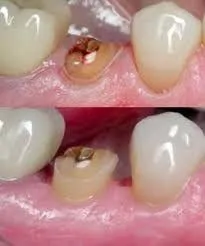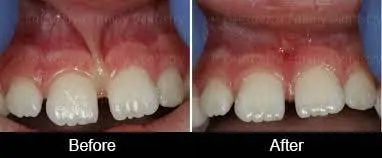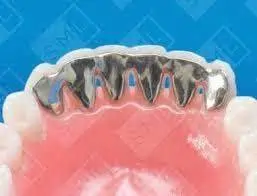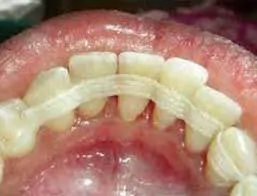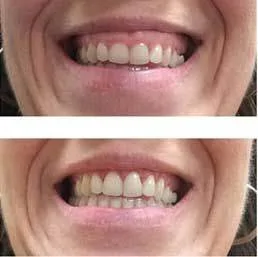GINGIVITIS AND PERIODONTAL DISEASE
What is Periodontal Disease?
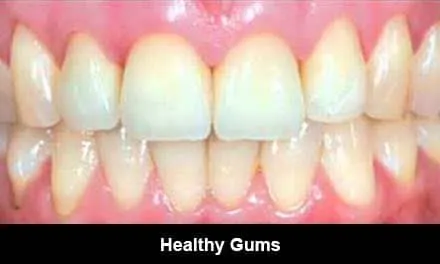
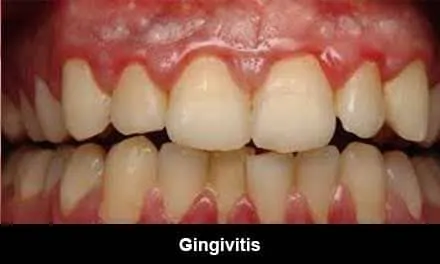
Periodontal (gum) disease is a destructive disease which can lead to the loss of teeth. In patients who don’t visit a dentist regularly, it can go undiagnosed since there are no significant symptoms until the late stages. Surrounding the base of the tooth, where the gums meet the teeth, are small pockets. If plaque, a biofilm containing bacteria, has an opportunity to form in these pockets, it causes inflammation known as Gingivitis. The only signs of Gingivitis are redness of the gums and bleeding when brushing.
If the bacteria progress deeper into the pocket it begins to destroy the bone around the teeth. This is known as Periodontitis. This bone loss can cause the teeth to loosen and eventually tooth loss. Patients do not experience many symptoms until the very late stages of Periodontal disease when the teeth become loose and painful. They may also complain of chronic bad breath or taste in their mouth. Evidence has indicated that the same bacteria which causes inflammation in the gums can enter the bloodstream through the periodontal tissues and adversely increase the risk of atherosclerosis, myocardial infarction, stroke, premature births and other systemic outcomes.
Because periodontal disease is a silent disease, it is important to have regular dental exams for early diagnosis. When caught early gingivitis and periodontal disease is quite treatable.
How do we treat Periodontal Disease?
Gingivitis is treated quite simply by a regular professional cleaning by a dental hygienist. There are two objectives in treating Periodontal Disease.
First, we want to eliminate the bacteria that cause the disease process. This is done with a deep cleaning called Root Planing and Scaling. This is a painless procedure where the gums are anesthetized and the plaque is removed to the base of each pocket. Many times this is all that is necessary in mild periodontal disease.
The second objective is to reduce the pockets to within normal limits so the patient can keep the pockets clean with normal home care. Normal pockets are within 1-3mm deep. Pockets that remain 5 or more millimeters are impossible to clean to the base and despite the patient’s best efforts at brushing and flossing, plaque and bacteria will continue to sit in the base of the pocket and cause further destruction. Pocket reduction in mild to moderate cases can sometimes be done with a laser. More severe cases may require a conservative flap surgery and possible bone grafting to bring bone contours and pocketing back to a condition in which the patient can care for. It is important to note that although bone destruction is largely irreversible its progression can be halted.
CANINE EXPOSURE FOR ORTHODONTICS
Exposure of canine teeth is usually performed in conjunction with orthodontics. Occasionally a tooth may not erupt properly and remain impacted or stuck in the bone and tissue. This occurs frequently with wisdom teeth and front teeth, particularly the canine teeth. Canine teeth are critical for function. The canines also form the aesthetic cornerstone of the dental arch.
The procedure is quite simple. It involves the dentist cutting a small hole in the gum, which allows the tooth to erupt. The dentist also uses a dental brace to guide the tooth into its correct position.
CROWN LENGTHENING PROCEDURE:
Occasionally teeth can be decayed down to the level of the bone or even slightly below the bone. This makes it impossible to rebuild the tooth with a crown. The crown would impinge on the tissue attachment around the tooth and cause constant pain and irritation.
Crown lengthening is a routine surgical procedure, which remodels the contour of the gum line. The procedure does not actually lengthen the crown, but rather lowers the gum line. The procedure is simple and quick and allows us to save the tooth as opposed to extracting it.
FRENECTOMY:
A frenum is a small muscle attachment that attaches your upper and lower lips to your gums. These attachments are normal and usually do not present a problem. If these attachments are too long or thick however, they can cause spacing or misalignment of the teeth and sometimes gum recession. There is also a frenum at the base of the tongue which can be excessive causing a person to be “tongue tied” leading to speech impediments. It can also limit the movement of the tongue in people playing wind instruments.
A frenectomy is a minor surgical procedure that is performed in our office where the frenum is trimmed or removed. It can be performed with either a scalpel or laser and takes very little time.
SOFT TISSUE GRAFTING:
Gum recession can be the result of several causes:
- Misalignment of teeth
- High or strong frenum attachment
- Piercings which rub on the gum tissue
- Previous periodontal disease
- Abfraction - incorrect occlusal or bite forces on a tooth
If this recession results in the loss of the thick attached gingiva (gum tissue)
around the tooth it can make the teeth more susceptible to periodontal disease. Gingival recession can cause tooth sensitivity. When it occurs around the front teeth it can also be aesthetically unpleasing.
During soft tissue grafting we take a small piece of tissue from between the layers of tissue in the roof of the mouth and position it to cover the defect. Sometimes the defect can be covered by simply repositioning adjacent tissue.
The goal of the graft is to re-cover exposed tooth and root surfaces with new oral tissue. This grafting encourages new tissue growth that will enable the gums to return to its original position around the teeth. The procedure is routine and entails a minimal amount of downtime and discomfort.
PERIODONTAL SPINTING:
Teeth that have lost bone from periodontal disease, are misaligned, or have been traumatically injured can become loose. Loose teeth can not only be annoying and uncomfortable, but have a much higher incidence of developing periodontal disease.
A technique called periodontal splinting attaches weak teeth together, turning them into a single unit that is stable and stronger than the single teeth by themselves. The procedure is most commonly performed on the front teeth. The procedure is as simple as using composite material or metal splint placed on the back of the teeth to attach, or splint, the loose teeth to the adjoining stable teeth. Tooth splinting is a common procedure that has gained popularity due to its effectiveness.
COSMETIC PERIODONTAL SURGERY:
Occasionally the gum line along your front teeth may be uneven or extend too far over the teeth making your teeth appear short and your smile gummy. These cosmetic gum issues can be corrected very simply with minimal discomfort with a laser to give you a beautiful smile.

